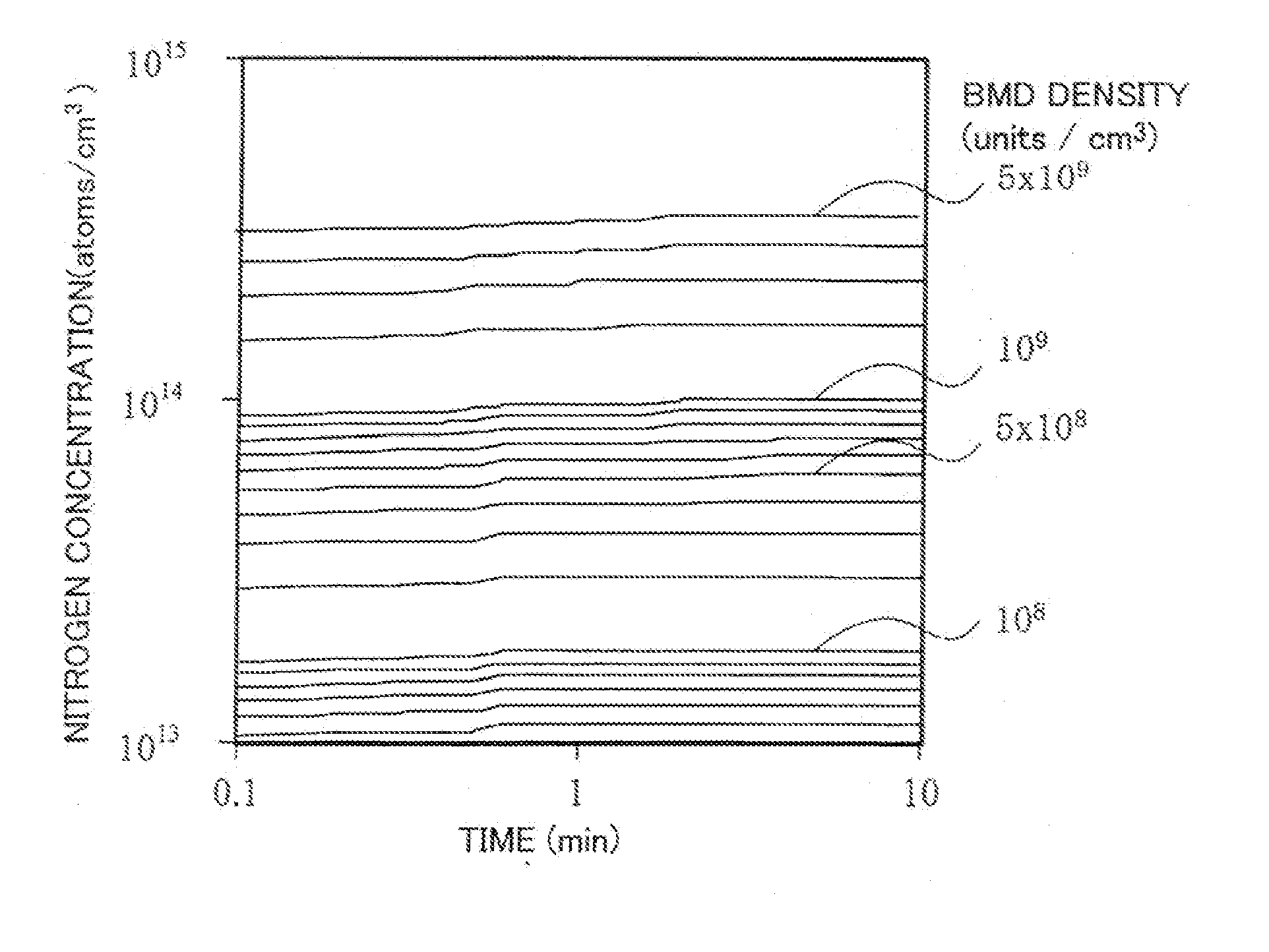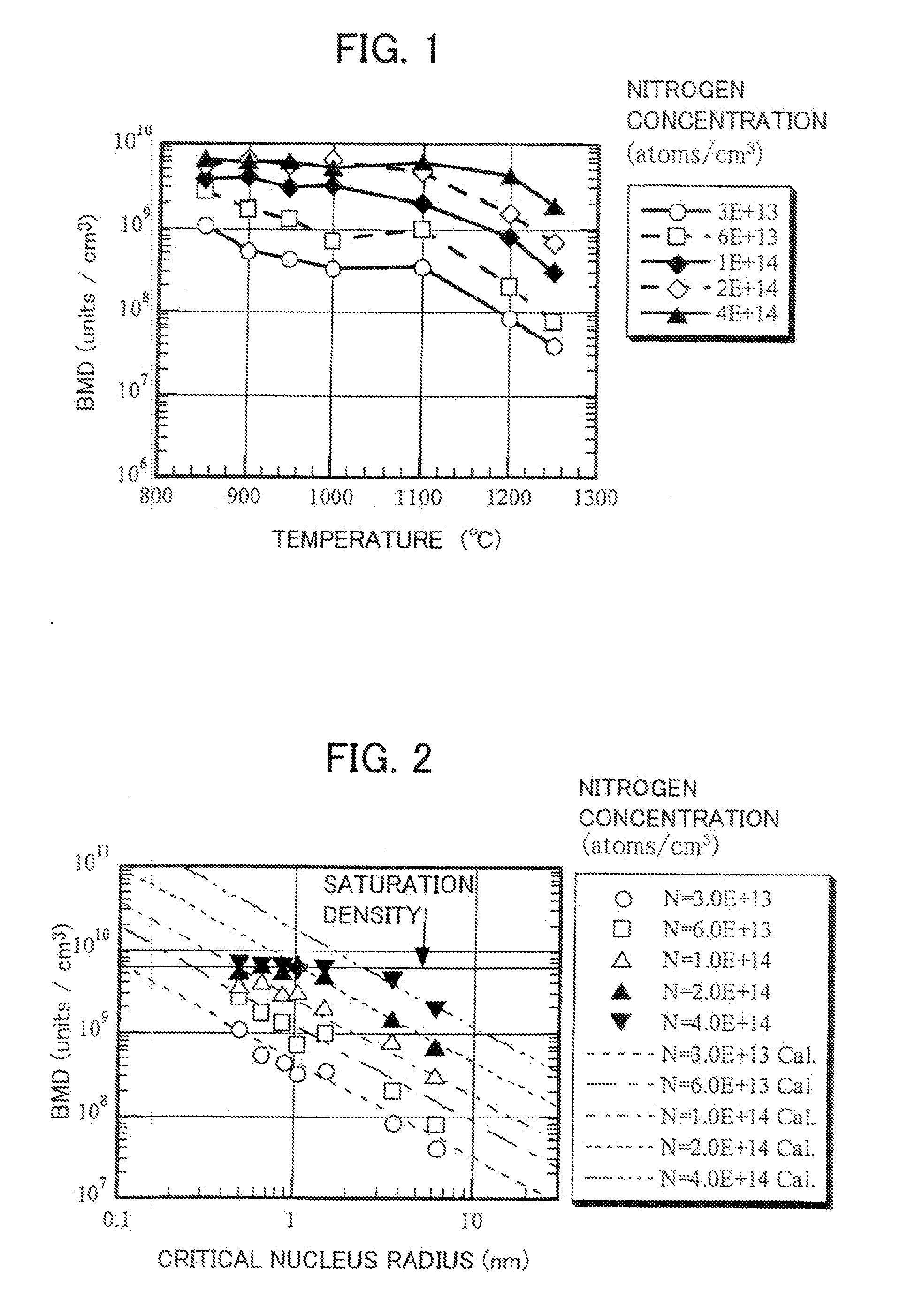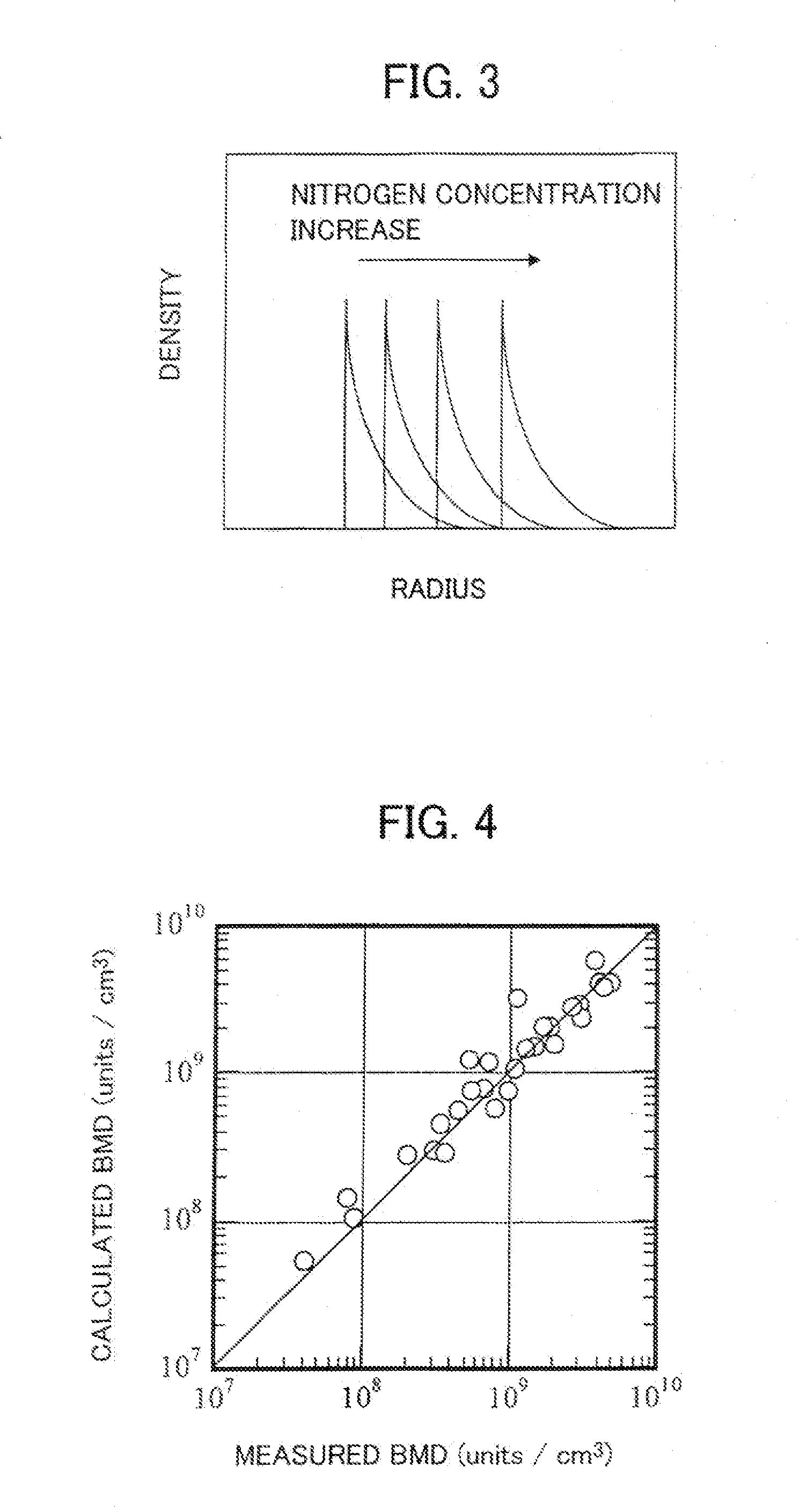Nitorgen doped silicon wafer and manufacturing method thereof
- Summary
- Abstract
- Description
- Claims
- Application Information
AI Technical Summary
Benefits of technology
Problems solved by technology
Method used
Image
Examples
embodiment 1
[0101] An example of predicting the BMD density to be obtained in a case where a wafer manufactured from a crystal whose cooling rate around 1100° C. during crystal growth is 3.5° C. / minute undergoes an epitaxial growth process is shown. Here, the effects of the nitrogen concentration and the temperature and time of a high-temperature pre-process (hereinafter referred to as “hydrogen baking process” in some cases) performed to eliminate natural oxide films before the epitaxial growth are predicted by a method according to the present invention.
[0102]FIGS. 8, 9 and 10 show the relation of the BMD density vs. the holding time at a given pre-process temperature and nitrogen concentration, when the cooling rate around 1100° C. during crystal growth was set to 3.5° C. / minute, the oxygen concentration at the time was set to 12.0×1017 atoms / cm3, the thermal annealing time from 500° C. to the pre-process temperature was set to 1 minute, and the pre-process temperature was set to each of 11...
embodiment 2
[0105] An example in which the effects of the heat treatment temperature and time of pre-annealing performed before an epitaxial growth process and the nitrogen concentration on the BMD density are predicted by a method according to the present invention is shown. The calculation method is the same as that shown in Embodiment 1.
[0106]FIGS. 11, 12 and 13 show the relation of the BMD density vs. the annealing time and nitrogen concentration, when the cooling rate around 1100° C. during crystal growth was set to 3.5° C. / minute, the oxygen concentration time from 500° C. in the epitaxial process was set to 1 minute, the epitaxial temperature was set to 1200° C., the epitaxial process time was set to 1 minute, and the pre-annealing temperature was set to each of 750° C., 800° C., and 850° C. Each of the contour lines in the figures represents a BMD density, and some of the lines are provided with their specific BMD density values. From these figures, the conditions for obtaining the BMD...
embodiment 3
[0107] An example in which the effects of the heat treatment temperature and time of pre-annealing performed before the high-temperature annealing process and the nitrogen concentration on the BMD density are predicted by a method according to the present invention is shown.
[0108] The cooling rate around 1100° C. during crystal growth was set to 3.5° C. / minute, and the oxygen concentration was set to 12.0×1017 atoms / cm3. FIGS. 14 and 15 show the relation of the BMD density vs. the annealing time and nitrogen concentration, when the pre-annealing temperature was set to each of 750° C. and 800° C., respectively in case of the thermal annealing rate from 800° C. to 1000° C. was set to 10° C. / minute, the thermal annealing rate from 1000° C. was set to 1100° C. was set to 2° C. / minute, the thermal annealing rate from 1100° C. to 1200° C. was set to 1° C. / minute, and the holding time at 1200° C. was set to 1 hour in a high-temperature annealing process. Each of the contour lines in the f...
PUM
 Login to View More
Login to View More Abstract
Description
Claims
Application Information
 Login to View More
Login to View More - R&D
- Intellectual Property
- Life Sciences
- Materials
- Tech Scout
- Unparalleled Data Quality
- Higher Quality Content
- 60% Fewer Hallucinations
Browse by: Latest US Patents, China's latest patents, Technical Efficacy Thesaurus, Application Domain, Technology Topic, Popular Technical Reports.
© 2025 PatSnap. All rights reserved.Legal|Privacy policy|Modern Slavery Act Transparency Statement|Sitemap|About US| Contact US: help@patsnap.com



